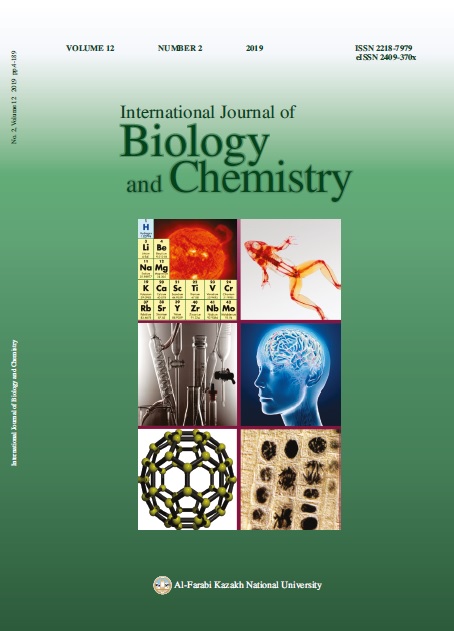Optimization of conditions of ultrasound-assisted extraction of phenolic compounds from orange pomace (Citrus sinensis)
DOI:
https://doi.org/10.26577/ijbch-2019-v2-2Abstract
Every year millions of tons of fruit peels, such as that from apples, oranges and pomegranates are disposed of as juice factory wastes in our country as well as globally. As we know today special attention is given to the optimum use of plant wastes and extraction of bioactive compounds, namely, antioxidants
and antimicrobials. Unfortunately, Iran with a 15.2-30% green waste production, currently holds the first place in the world fruit waste production. The current study was carried out with the goal of optimizing the ultrasound-assisted extraction of antioxidant compounds from orange pomace. In this optimization by
use of the response surface method, a Box-Behnken design was evaluated for three variables consisting of ultrasonication amplitude (20, 60 and 100%), ultrasonication time (15, 35 and 55 min) and ultrasonication temperature (35, 50 and 650C). The results showed if the extraction time, extraction temperature and ultrasonication Amplitude were to be set at 26.43 min, 350C and 65.66%, respectively, the highest antimicrobial antioxidant compound extraction efficiency would be reached. Under such conditions, phenolic compounds amount of 91.96 mg of gallic acid, free radical inhibition of 57.89% and extraction
efficiency of 10.62% were attained. The results demonstrated that ultrasonication could be a very effective method for continuous extraction of antioxidant compounds from fruit waste.
Downloads
How to Cite
Issue
Section
License
ааа

















